Welcome to “Compassion and Commitment: A Journey Towards a Cruelty-Free Life.” This transformative course is designed to guide you on a path of compassion and commitment, inspiring you to embrace a lifestyle that is centered around kindness and empathy toward all living beings. By incorporating the stories and experiences of rescue animals, this course aims not only to educate but to touch your heart and soul profoundly. Join us on this extraordinary adventure where compassion and commitment intersect with the transformative power of animal wisdom.
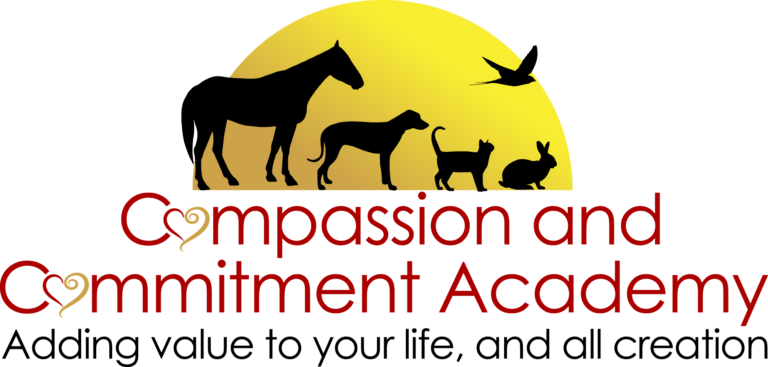
WELCOME!


ABOUT JOE
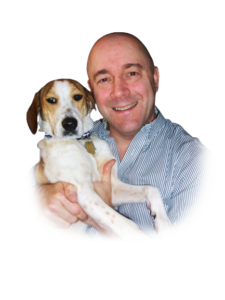
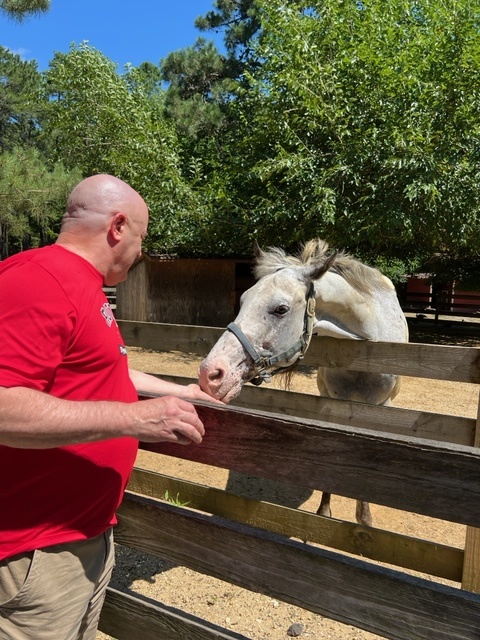
Course Objectives
– Gain inspiration from resilient beings.
– Develop a heightened sense of empathy.
– Apply the wisdom learned from rescue animals to your daily life.
– Foster awareness about cruelty-free living.
Click or Tap a Module to Begin
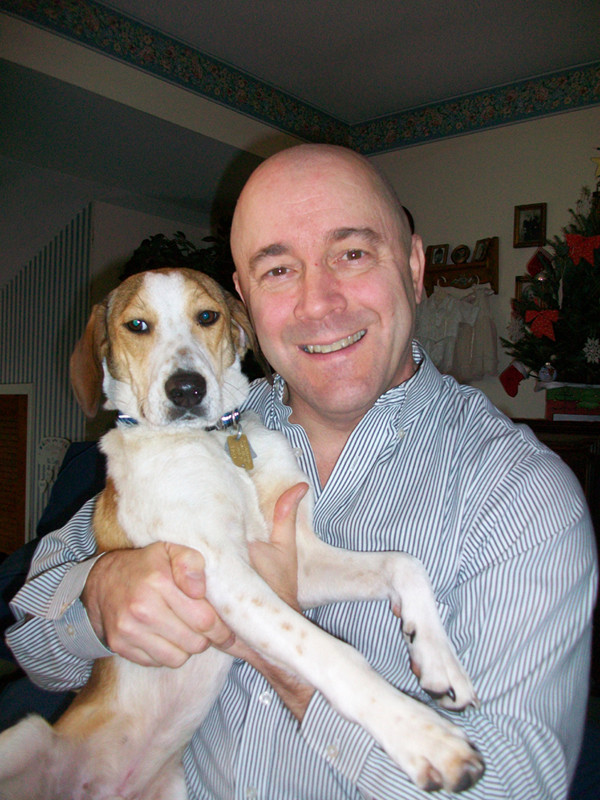
Course Introduction
The weight of life’s stressors may cause us to yearn for a world infused with greater compassion. The good news is that we can introduce more compassion and alleviate stress in our lives. I hold answers that have proven effective for both myself and others. All I ask is for your willingness to embark on this journey with me. Once initiated, I am confident that you’ll choose to stay. The outcomes are profound—more compassion, a promising future for all, and an abundance of respect and joy in life.
Have you ever felt the weight of life’s stressors pressing down on you?
Do you believe that we possess the power to introduce more compassion into our lives?
EXERCISES
If we were starting a diet, you would want to evaluate where you are now. Let’s keep that logic. On a scale from 1-10, where do you think you are on “self-compassion”? How about compassion to all creation?
Please be honest with yourself; where you are, you are. We will make progress.
Next, and most importantly, where are you on being open to starting a new journey in life?
Let’s also look at a 1-10 scale, but if you are below 5, please do the following:
Spend time each day praying/meditating just to be more open to this journey.
Compassion and Commitment Academy
Part 1: Foundation of Compassion
Section 1: Learning From All Creation/Understanding Sentient Beings
Did you know that every living and breathing being has something in common? It is the ability to feel, love, and experience physical and emotional pain. The examples of living beings showing loving and experiencing pain used in this video may be a bit different. However, with an open mind and heart you will begin to see their value.
EXERCISES
Consider a habit in your life where you can improve levels of…
Having an Open Mind: How quickly do you jump into a debate?
Commitment: Consider reaching out to someone who you lost touch with.
Acceptance: How often do you complain about things like the weather?
Patience: Consider spending more time meditating or praying.
Consider working on one a day for 4 days and then repeat.
Journal your experiences in each area.
We will continue to look at these important attributes in Part 1.
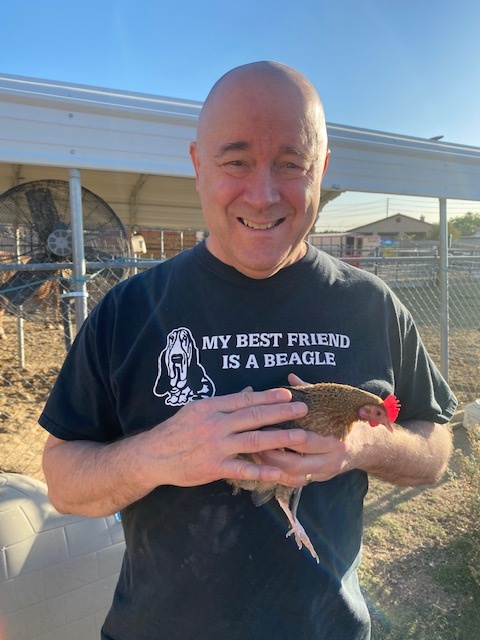
Compassion and Commitment Academy
Part 1: Foundation of Compassion
Section 2: The Heart and Mind Connection
Let’s kick off with a trending term. Numerous trends have emerged throughout the years, but one that seems to have enduring appeal is “mindfulness.” It’s a concept we would do well to embrace, with the critical question being: how adept are we at practicing mindfulness?
Let’s define it to see:
“Mindfulness is a type of meditation in which you focus on being intensely aware of what you’re sensing and feeling in the moment, without interpretation or judgment. Practicing mindfulness involves breathing methods, guided imagery, and other practices to relax the body and mind and help reduce stress.”
At the very least, this requires an investment of time. However, considering the benefits of mindfulness for our well-being, I’m confident that we will all find it worthwhile to dedicate that time.
The first thing to realize is that mindfulness is a powerful connection between your mind and your heart.
This is good news, but something to be aware of is that the heart and mind are two of the most vulnerable places. However, at the same time, the heart and mind can drive us to higher levels of positivity in our life.
So, our first action is to picture a solid beam from your mind to your heart full of positive energy.
Now, it is time to get into the daily mode of mindfulness. This means every day, including holidays, vacations, and even days when you are not feeling 100%.
But there is good news!
Have you heard of the 95-year-old man who meditates all day, is wise, is full of energy, and instructs so many people?
He is a great guy, but we DO NOT need to be him.
Instead, what we need is what I call a 24/7 mind/heart mindset.
We can achieve this by practicing every day, and when we do well, we need to recognize the good feeling.
If you are thinking, wait a minute, is this really possible?
Yes, it is! I do it now, every day!
We need to understand that our thoughts will dictate this practice, and how we manage those thoughts will determine our success.
It comes down to the easy task of channeling our thoughts in a direction where our respective actions will lead to a healthy mind and heart connection.
Let me not minimize this!
It takes work! But all the work is worth it.
Just consider what happens when someone encounters you and starts spewing negative venom. Your whole being gets sucked into these thoughts.
Before we go to a remedy, let’s not pin this on the person who spewed the negativity; we can easily do this to ourselves.
We need a game changer when negativity enters our lives, by self or otherwise. By completing a 5-second mediation to alter the direction of our thoughts, we can get back to where we need to be.
Who can occupy our mind and heart and have the power to turn this thinking train around in the right direction?
Start to think my friends. Who has this ability?
For me, I have two dogs who are both in Heaven, Daniel the Beagle and my girl, Shelby.
I keep them both very busy, but I call them my “meditation mentors”, and they are both fantastic at keeping me on track.
It is time for you to determine who works for you and then put it into practice.
EXERCISES
Kindly commit to conscientiously practicing the following for the next 3-4 days, and afterward, assess your progress:
Be attentive to your thoughts, recognizing their potential to influence your actions.
Summon your mental All-Star when your thoughts deviate for any reason.
Dedicate at least 10 minutes, twice daily, to express gratitude for your champion during moments of serene reflection.

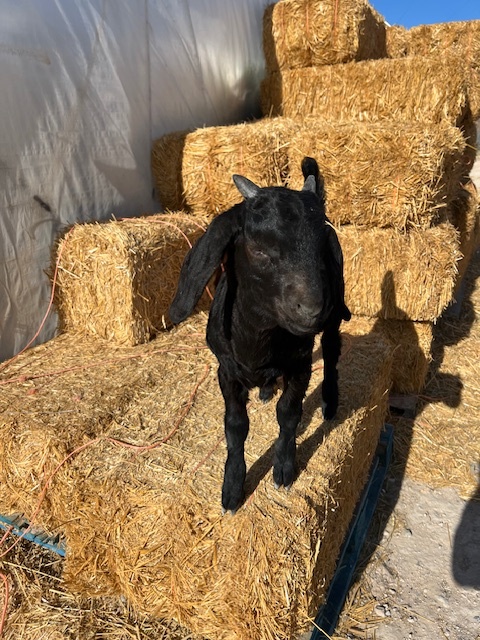
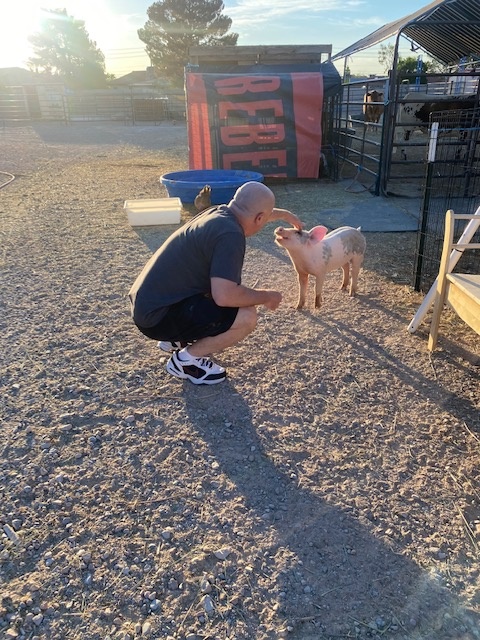
Compassion and Commitment Academy
Part 1: Foundation of Compassion
Section 3: Embrace All Commitments
Our thoughts are believed to drive our actions. However, I think our thoughts and actions are not a runaway train. We can quickly stop, evaluate where we are going, and make necessary adjustments.
When we do this, self-compassion can become more of a reality. We are more in control than we think.
“Victim statements” only go so far. Our life and how we live it are up to us, no matter what has happened in the past or what we think will happen in the future.
While traveling to my favorite sanctuary, “All Friends Animal Sanctuary” in Las Vegas Nevada, I met a beautiful goat named Hope.
Hope was unfortunately separated from her mother on her way to a factory farm and was not developing well without the necessary nutrients from her mom.
This did not stop Hope from being a sweet young lady who would pose for pictures and stay close by for comfort.
Unfortunately, Hope passed away at a very young age, and her death saddened me greatly.
She did not have a chance to live her life through no fault of her own.
Several weeks after Hope made her journey to Heaven, I was at the sanctuary and met another goat named Deacon.
Deacon means servant. I know this because I was ordained a Deacon in the Catholic Church in 2002.
Deacon is all black, from his feet to the tip of his horns. He is charming and outgoing. He, like Hope, was also separated from his mom too early in life, but he was able to gain enough strength to live a healthy life.
And live he does!!
I want to introduce my good friend, Deacon, to address you.
Hello everyone!
My name is Deacon, and I am a goat who loves life!
An animal’s only possession is their life. Even humans of modest means have some possessions, but animals have none. So, we do value our life every day. That alone is a good lesson for humans, but I promise I have more.
Goats are very sociable creatures and are highly inquisitive as well. We recognize that these attributes add value to our life.
We do not sit around on our phones or watch some big square black thing for hours each day. We love getting out and exploring what is around us.
This leads to a higher level of motivation for life!
When I was very young, Joe came to the sanctuary and spent time with me. He was amazed at my energy level, even though I was not feeling great then. He came over and took pictures with me as I roamed my home.
I noticed that Joe got a jolt of energy from me, which made me happy.
When he came back a year later, I was fully grown and had even more motivation to enjoy each day of my life.
I ran to him and played with him with my horns. After all that seemed like a fun thing to do.
He laughed between dodging away, but this was how I expressed joy for life and how I remained motivated to live each day. I shared this important lesson with Joe that day.
I am committed to living life to the fullest by being open to what is before me every day.
It has been a pleasure to speak with you, but now I have some hay to eat and things to investigate, so I will turn this back to my friend, Joe.
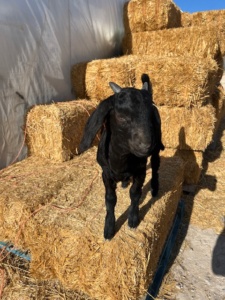
Thank you, Deacon.
I want to focus on a few things Deacon shared with us.
First and most important is the value Deacon puts on life instead of possessions. Animals understand this, and we should too. We should also respect them for bringing awareness to us.
Many people will argue when life begins, but once we are born, it is clear to everyone that life exists.
We should ask ourselves daily how we value our own lives and the lives of others. Possessions can get in the way, especially possessions we do not have.
Deacon has provided us with some valuable wisdom to value life over possessions and perform daily actions to show our commitment to life.
However, there is much more to consider when it comes to commitments, and although Deacon can help, it is up to us as humans to take this vital step.
I have seen a decline in how humans respond to responsibilities. I wish I could point this decline solely to our youth, but it is a severe matter for people of all ages.
Schools close when we have less than an inch of snow.
People walk into their jobs 10-15 minutes late with no remorse.
A bare minimum effort has become the norm. This is a dangerous trend regarding showing commitment to what we do for a living and potentially even more hazardous when attached to our self-worth and compassion.
Similarly, I have said that we are striving for mediocrity. This mediocre mindset is not good for our society but also detrimental to our minds and hearts.
We need to toughen up to be able to soften up!
If we have a casual attitude towards our responsibilities, that easily transfers over to other areas, like how we care about ourselves and others!
How we live life as Deacon does and how we respond to our commitments are connected more than we realize.
We need to embrace an attitude of enthusiasm for life and our responsibilities. Making this connection will improve how we feel about ourselves and will increase our awareness towards opportunities for compassion.
Let’s take this vital step seriously with each choice we make.
EXERCISES
I believe there is ample food for thought in this section and I encourage you to contemplate what Deacon has imparted. Take a moment to:
Reflect on the significance you place on life compared to possessions.
Embrace a Deacon attitude to inspire motivation and foster a commitment to living your best life each day.
Make a connection to one of your daily responsibilities and take a step to increase your commitment (arrive at school/work 5 minutes early instead of “on time”)
Take note of how you feel about these steps in your journaling.
Compassion and Commitment Academy
Part 1: Foundation of Compassion
Section 4: Acceptance and Attachments
Acceptance seems to be easy, but clearly, it is not. We have a need to be in control, even of matters that are not possible.
Patience goes hand in glove with acceptance.
This is the last area we will focus on as we build a foundation for compassion and commitment as a way of life.
The first step in improving how well we accept things in life is to walk through a few days and notice how we feel when things are out of our control.
The driver who cuts us off and takes off never to be seen again.
The person who will oppose what we say even if we say the sky is blue.
These are just a few examples. My bet is you have thought of more.
With a smile, the goal is to let it go quickly and completely.
Oh yes, a worthy challenge, but one with significant payoffs.
We only have so much energy; to use it up on things like this is not wise.
We want our energy used for more compassion in our lives.
Once we have taken this critical step, we can move on to other, more challenging areas of acceptance.
These include losses in life and even some health-related matters.
This leads us to take the next step, which I call, “healthy attachments and detachments”.
We must strive for a balance of healthy attachments and detachments, especially if we are going to open our minds and hearts to compassion for all creation.
All attachments seem healthy at first, but they are not. And if you follow the Buddhist way of thinking, even healthy attachments ultimately lead to suffering.
Some wisdom here leads us to find that balance between being attached but never to the point of obsession and being open to times when detachment is necessary.
This is especially true when we face losses of loved ones.
One way to think about it is that we always stay attached to the good memories but detach from the negative things, especially if they involve terrible pain or suffering.
Most important is to detach from the feeling that we can control everything, like the health and well-being of those we care for.
This understanding is fundamental as we launch into deeper levels of compassion and commitment for all creation.
Now, we will examine the area of suffering and pain.
Stay with me, and there will be bright spots ahead!!
EXERCISES
Ponder upon a situation, specifically a loss, where you perceived greater control than was possible.
Engage in breathing and meditation when you feel stressed by attachments or detachments.
Moving ahead, navigate the balance beam with strength and grace. Embrace what you can control and let go of what you cannot.
Work on the balance of being attached to someone but detached from the control over situations.
Compassion and Commitment Academy
Part 2: Cruelty-Free Journey
Section 1: Suffering and Life Lessons
Now that we have built a solid foundation, we can move on to some challenging issues regarding suffering and pain. Every living being experiences this; if they did not, there would be no need for compassion.
Compassion is the remedy for suffering, and we all can contribute.
We need to accept the fact that at some point, every living being suffers emotionally, physically, or both.
This is not necessarily a bad thing since, in some circumstances, suffering can lead to positive life lessons and outcomes.
For this section, I will break our content down into 2 questions;
How do we currently approach the possibility of suffering in life, and how can we improve?
Can we make sense of suffering, and how can we lead it to provide value in life?
Once we explore these questions, we will continue to build our compassion and commitment attributes.
Let’s roll…..
Question #1: How do we currently approach the possibility of suffering in life, and how can we improve?
For over 40 years, I have trained in martial arts, mostly in one style, and only recently have I learned a new style. We should remain open to all styles and whatever works best for us.
This is true of life as well; never shut out any philosophy or way of thinking because it could provide value.
So, let’s launch into what Buddhism believes about suffering.
Buddhists believe that suffering is the result of too many desires and ignorance therefore it is inevitable for humans.
That does not mean we cannot do something about it!
We can cut down on our desires, especially those that may be harmful to ourselves and others, and we can open our minds and hearts to more information about what goes on in the world.
So, our approach is to be honest with ourselves about our desires and to commit to learning more about things that may currently not be on our radar.
EXERCISES
Choose at least two desires you are open to suppressing, even if not entirely, at least initiating a reduction in their prominence.
Simultaneously, pick one subject or area you are open to learning more about, especially if you’ve previously closed yourself off.
Question #2: Can we make sense of suffering, and how can we lead to it providing value in life?
Like it or not, only humans can make sense out of suffering. We do this by stepping back from the situation and seeing how to develop a life lesson from what is happening.
This would include losses of loved ones, people betraying us, and other things that cause us to suffer. Remember that suffering includes emotional and physical means.
Animals do not have the ability to make sense of suffering, and they suffer way more than we do in the world.
Can we all agree that we are all connected in some way?
Remember the movie “It’s a Wonderful Life”? George realizes that his decisions impact so many others. This is true; we are all connected in ways we rarely think about.
So, if we want to provide value to our lives and the lives of others from suffering, we need to take the life lessons we experience and use them to help others.
For instance, you may not want others to feel betrayed like you did, so you make some changes in your life to help those who experience betrayal.
This is the thinking of people who have experienced substance abuse, helping others currently struggling. They know what it feels like.
EXERCISES
Reflect on a challenging experience where you faced adversity and extracted a valuable life lesson from it.
Identify several potential ways in which you can offer assistance and support to others undergoing similar situations.
Compassion and Commitment Academy
Part 2: Cruelty-Free Journey
Section 2: Truth and Morals
Is there a connection between truth and morality?
There is. Truth defines “what is”, morality defines “what should be”, but they intersect during decisions and actions.
There is also something else to consider. There is the universal truth that we all try to adhere to and then there is our truth, which defines who we are and what we believe in.
For me, and many of you who are joining me on this journey, our truth involves a level of kindness and respect to animals.
We see a future filled with more compassion and peace when we decide to live our truth more fully and combine it with a moral standard.
Let me stress that nobody is perfect, so making strides in the right direction is what matters here.
I want to take some time to discover “our truth”.
To help me with this critical section, I am calling on my dear friend, Macy.
Macy is a chicken. We have known each other for four years, and I consider her someone who can help us live more truthfully.
Hi! My name is Macy, and I am lucky to live in a sanctuary. While being transported to a scary place, I fell off the truck. I love living where I do, and Joe has come to visit me for the past three years.
Most people don’t realize that chickens are all very different. Some are outgoing, some are not. Some need to be in charge, and some like to blend into the background. I am not extremely outgoing, but I enjoy when a human I like holds me close to their heart.
I know that humans struggle with being their “authentic self”, and living the “truth” they are passionate about. In many situations, they compromise, leading to less commitment to their passions and purpose.
Joe has mentioned this to me when we are together. He likes to talk to me when holding me close, and I love hearing his voice.
Like many others, Joe needs to focus on living his ‘truth’ and speaking out as his authentic self. When this truth aligns with the truth we all should live with, more compassion is evident.
The first time Joe held me, he was a little nervous because I am not very big. He did not want to hurt me. Once he seemed more comfortable, I snuggled close to his heart. I like hearing his heartbeat, and I know that a person’s heart is where their truth is.
Chickens can relate to humans better than most people think. We connect with certain voices and emotions.
I know Joe is not alone in the struggle to live authentically and truthfully by following your passions with joy and commitment.
This is why I burrow close to his heart when he visits me.
I may not be able to meet all of you, although there may be a chicken like me somewhere close to where you live.
Either way, I suggest you connect your heart with your truth every day and make strides to live it with great enthusiasm no matter what is happening around you.
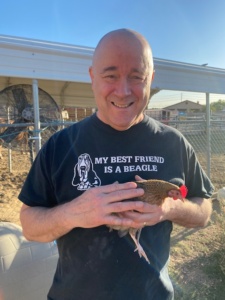
Thank you, Macy. I love you very much, and I appreciate you sharing this wisdom with us.
Once we define our truth, we must see how it aligns with the universal truths. Are we being honest with ourselves and others?
Then, it takes some time to evaluate our moral compass by learning more about what goes on in the world, what we agree with, what we don’t agree with, and what we want to take a stand against.
This is a significant undertaking in a world where animals are abused and exploited because of the financial impacts of these industries. Exploring these areas to connect with your truth and moral standards is not for the faint of heart but is worth the effort because of the impact you can have.
I am more than happy to assist you in this endeavor. We have more of an impact on cutting down on suffering and pain than we realize.
It comes down to a simple but profound fact. We are all connected in some way, people and animals. Our decisions and choices can dramatically affect each other and should always be evaluated and considered.
Any progress on living with more compassion, commitment, and peace depends on this.
EXERCISES
1. As Macy suggests, please take time each morning and visualize your intense and passionate heart connecting with your “truth”.
2. Write a paragraph defining your truth and how it connects with your moral compass.
3. Determine what changes you would like to make to improve that connection, understanding that it will reduce suffering and raise compassion worldwide.
4. Journal your experiences as you interact with others and live your truth more fully.
Compassion and Commitment Academy
Part 2: Cruelty-Free Journey
Section 3 : Love is the Answer
Are you willing to make a sacrifice for someone you love? Brianna, the cow, will show us the most beautiful example of this.
EXERCISES
1. Kindly invest some time in deepening your understanding of the meat and dairy industries, keeping your mind and heart wide open.
2. Evaluate your dietary choices in light of this knowledge.
3. Harness these learning opportunities to pave a path toward better levels of love in your life in all areas, linked to some sacrifices and risks.
Compassion and Commitment Academy
Part 3: Compassion in Action
Section 1: Understanding Animal Laws
Are there laws to protect animals in slaughterhouses, testing labs, racetracks, and other places where animals are housed for human use?
Yes, there are plenty of laws, and I compliment all who dedicate their time and talent to working on additional laws to help these sentient beings.
I have spoken with students who are participating in Animal Law classes. Still, my presentations were mostly motivational and not based on the technical knowledge required to shape the laws.
Once again, I am happy that these laws exist because they assist with the situations animals are in. I will not talk too much about the laws because I am not qualified to do so.
I would rather go down the road of reality and morality, connecting to the morals and truths we spoke about in the last section.
The reality of the laws in place is that they rely on enforcement to be effective. In so many cases, people do not follow the rules to protect animals. If they were, the profits made from all these situations would diminish. Yes, sorry to say, but money drives the decisions here, like many other places.
In addition, there are no laws at all to protect birds. This includes chickens, turkeys, and ducks. So, any horrific treatment for these poor souls goes unnoticed and untreated.
Finally, even if everyone follows all laws, the animals in every situation have a concise and poor quality of life and do not want to die.
Yes, animals die, and they know they are going to die. They are much more intelligent than we sometimes believe, and they understand what is happening.
That said, it is important for an animal lover to research the laws in place and become familiar with how they are enforced.
The most crucial point to know in this section is that, like many other areas of life, morality and truth remain more critical to enacted laws, especially if they are not being followed as they should be.
EXERCISE
1. Google laws for animals in slaughterhouses, testing facilities, and entertainment and become familiar with what they are and how they are enforced.
Compassion and Commitment Academy
Part 3: Compassion in Action
Section 2: Making Compassionate Choices
There is an experiment done with rats where if the rat chooses a certain button in his cage, he gets fed, but the rat in the cage next to him receives a painful shock. This is a cruel experiment, but having already been done, the results are fascinating.
The rat always chooses not to hit that button and does not receive food, but he spares his friend’s suffering.
This choice is before us every day, from minor matters, right up to the point where our choice can save an animal’s life.
Animals of all species are abused, exploited, and killed in our world for food, clothing, experiments, and entertainment.
They know they are going to die, and the only emotion the animals do not have to deal with is betrayal because they are never shown love.
I will assume that this is not acceptable to you; at least, I hope not.
At the beginning of this course, I mentioned that I would not be too aggressive in my approach and I will keep that promise.
That said, I need to explore some of what goes on daily behind intentionally closed doors to the animals we share the planet with.
Then, like our friend the rat, we can explore choices that lead to more compassion.
As I continue to do, all I ask of you is to keep an open mind and heart.
I firmly believe in the value of self-discovery, so I will provide some insights into how animals are treated, and then I ask you to go further and research some things on your own. If you are willing to do this, know I am available to speak privately with you about your findings.
When it comes to animals in slaughterhouses, they are kicked, beaten, prodded with electric stun guns, and many other horrible abuses. They do not want to die, and they fight for their life. Slaughterhouse workers, many of whom are also abused themselves, torment and torture these poor animals before they die.
Those in labs are tortured without mercy, most for no reason at all. They never see the light of day, run on grass, or cuddle on a sofa. Most research is useless as many drugs and product effects are different for a dog and a human. In addition, tests are done to obtain more funding. It is obvious that if you force a Guinea pig to ingest 10 pounds of cocaine, he is going to die!
Animals like sheep and geese used for clothing are also tortured by having their hair ripped off. If they survive, they will likely freeze because somebody took their hair or feathers to make a coat for humans.
Those animals used for entertainment in racing, rodeos, or zoos also endure poor treatment. People abuse them so that they comply with what they are asked to do, and when they have fulfilled their usefulness, they are often killed for food.
As the saying goes, what I have provided to you is the “tip of the iceberg,” but when you take the time to learn how extreme it is and the numbers killed each day, it presents itself as an opportunity to make more compassionate choices.
Please allow me to shift gears a little to make a connection to what we just covered.
In the early 2000’s it was discovered that certain clergy members from a religious institution were involved in many cases of child abuse. During this time, many people felt this was morally wrong. Regardless of how strong their faith was, they either left the institution completely or followed a different religious institution.
Those who enabled this to happen were vilified, and in many cases, rightfully so.
People took a stand on morality and made different choices.
Similarly, when Michael Vick was found to be involved in dog fighting, many people abandoned the NFL because they felt they did not handle it appropriately.
These are similar situations, and I know that no two are exactly alike, but I provide them just for your consideration.
There are other options to pursue for eating, entertainment, cosmetics, etc., that do not involve animals or animal products.
The question to ask ourselves now is do we at least want to consider changes in our lifestyle based on what is happening to these sentient beings every day?
If the answer is yes, and I hope it is, then we can start slowly looking at things in our lives.
It comes down to 3 steps to take, and each will happen at a different pace for each of us.
Here are the exercises for this section, and as with all sections moving forward, please contact me directly for any questions you may have. I would welcome and appreciate it if you did.
EXERCISES
Contemplate a specific situation where animals are mistreated. Explore ways to reduce your support for this industry, framing it as a “moral win” for both yourself and the world.
Identify alternatives (such as food, makeup, etc.) and gradually incorporate them into your lifestyle.
If you sense that these actions contribute to your compassion and commitment journey, consider advocating for animals when appropriate.
Compassion and Commitment Academy
Part 3: Compassion in Action
Section 3: The Journey of a Vegan
The journey of a vegan begins with a choice to be more compassionate and then connects to being more committed to those we share the planet with.
People who become vegans do so for three reasons:
1. The animals
2. The environment
3. Health reasons
We have already covered some of the issues relating to animals.
Most people do not realize that when it comes to the environment, producing one steak uses enough water for a destroyer to float in. And, the amount of grains used to fatten up animals destroys so much of our earth.
For health issues, the number of people with heart-related issues rises each year, and almost always, a connection is made to cholesterol and the damage done by eating animals.
Here, too, I have only provided a little information. There is much more to explore.
I stand with all vegans who are trying to make a difference, but like in other areas of life, that does not mean we agree on strategies.
I believe that if someone decides to make health-related choices to cut down on animals being killed, that is a compassionate choice, and they are connected.
Some vegans believe that people should only make more compassionate choices because of the animals. I like to think that it is all connected, and once you start, you will open up to other reasons to make these choices.
There is also a philosophy that the only way to do this is, ‘cold turkey’. No pun intended.
Start off making some changes, like meatless Mondays, and then keep the momentum going.
No matter who we are or our history, this is a big change to undertake, and we all approach things differently.
Once we see the value of living with more compassion, we can start to make choices towards a vegan way of life.
One thing I have learned since I started my vegan journey, is that there are options for all areas of life: food, clothing, beauty products etc.
I have a vegan vest that I love, and it keeps me warm.
Since adjusting my diet, I have more energy, and my stomach issues have improved. Yes, I get plenty of protein!
I use vegan soap and toothpaste. People tell me I still smell okay, and my teeth are fine.
Exploring the options that are gaining some momentum is enjoyable and satisfying.
The best result is that once you begin exploring compassionate choices that help animals, the ripple effects to other areas of life are amazing.
I am a happier person with less anxiety, and I have more purpose than at any other point in my life when I was not aware of animal abuse.
And at 63 now (2024), I have more energy than ever.
Please consider this life-changing journey.
EXERCISES
1. Please look at one change you can make to start a vegan way of life in each of the following areas. Food choices, clothing options, beauty products, entertainment.
2. Journal how you feel both emotionally and physically after a week of making these changes.
Compassion and Commitment Academy
Part 4: Next Steps in the Journey
Section 1: The Lessons We Learn
In this video we will continue the theme of learning from animals. Have you ever noticed how much more accepting animals are than humans? We have a lot to learn about compassion and acceptance even after betrayal.
EXERCISES
1. Think about an animal who was part of your family, or who you knew. Write about the lessons this precious being taught you, and how you can put this into practice to increase your levels of compassion and commitment.
2. Find another animal, even one you may not have met personally, research what this animal did during their life and discover more life lessons.
Compassion and Commitment Academy
Part 4: Next Steps in the Journey
Section 2: The Journey Continues
I have always believed that more things in life are connected than we realize. This is especially true when you spend time studying Martial Arts.
Aside from the fact that Martial Arts is not what is portrayed on television, or the MMA, it has a fantastic insight into life.
To appreciate training, one must learn something new every day and make slow, deliberate progress. Then apply what you learn to daily life and choices.
This requires a deep sense of commitment and discipline. These attributes are essential for anything in life you are genuinely passionate about.
When you embrace this mindset, learning, and growth, continue for a lifetime, and a step back is not a tragedy. Stutter steps happen and they present an opportunity for discovery.
When you begin a journey to cruelty-free living (vegan), you will have times when you will take a step backward, or you may take more time than you thought to make a certain diet change.
Do not let anyone scold you for this; most importantly, do not scold yourself!!
This is called life and learning.
When you approach cruelty-free with this level of mindfulness, it will lead to long-lasting success, and you will eventually have the desire to coach others.
All that said, it is good to follow a plan that includes some goals.
EXERCISES
1. Create a 1 month and a 3-month plan for your journey to living cruelty free. Write it in pencil just in case you need to erase or change something.
2. Feel free to contact me if you want to run something by you or me?, but understand this is your plan, and you should feel good about it.
Compassion and Commitment Academy
Part 4: Next Steps in the Journey
Section 3: Course Resources and Support
There are plenty of resources that review the plight of animals in different industries, and some that present options for diet and other things once you begin a vegan journey.
I have selected a few here, but I am aware of many more if you would like to contact me to discuss this.
A Warning: Some are very graphic and not easy to watch or read. I leave this up to you.
Two that I listed that are challenging to watch/read are:
Bleating hearts
Earthlings
Cookbooks:
Delish Vegan Cookbook (and more) by the creators of Delish
The Low-carb Vegan Cookbook by Eva Hammond
Vegan Holiday Cookbook by Katie Culpin
The Fiber Fueled Cookbook by Will Bulsiewicz MD
GLOSSARY OF CONTENTS
Introduction
About Joe
Course Objectives
Course Introduction (Video)
Part 1
Section 1 – Learning from all Creation/Understanding Sentient Beings (video)
Section 2: The Heart and Mind Connection
Section 3: Embrace all Commitments
Section 4: Acceptance and Attachments
Part 2
Section 1: Suffering and Life Lessons
Section 2 : Truth and Morals
Section 3 : Love is the Answer (video)
Part 3
Section 1 : Understanding Animal Laws
Section 2 : Making Compassionate Choices
Section 3 : The Journey of a Vegan
Part 4
Next Steps in the Journey
Section 1 : The Lessons We Learn (video)
Section 2 : The Journey Continues


